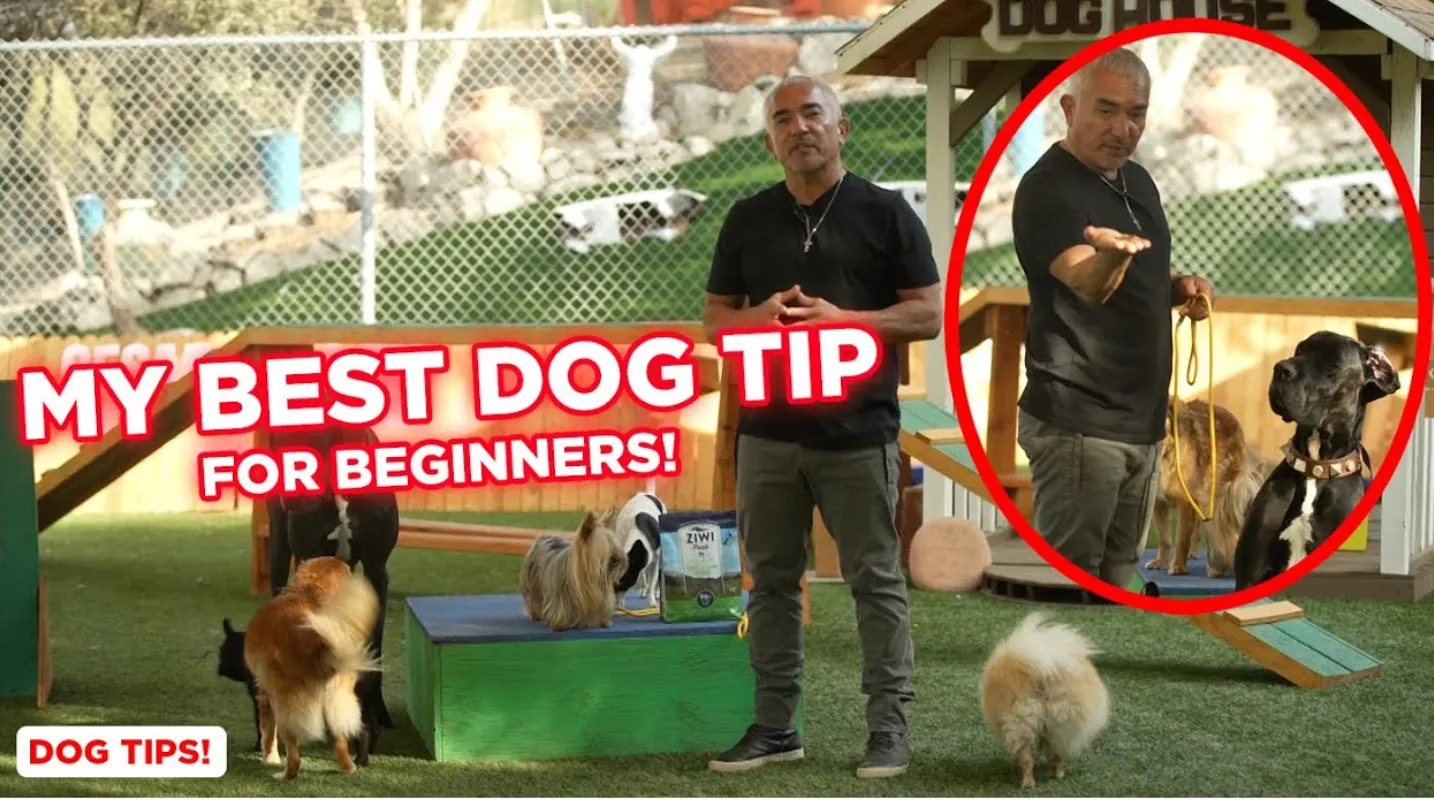Beyond Sit and Stay: The Unpredictable Truth About Daily Dog Training Rituals
Picture this: years ago, I used to think a dog who could high-five on command was the definition of 'well-trained.' That belief lasted until the first time a neighbor’s toddler was bulldozed by my exuberant retriever. It wasn’t embarrassing tricks I needed—it was impulse control, patience, and a way to weave training into daily life. What I discovered turned my approach upside-down—and just might surprise you too.
Rethinking Routine: Meal Time Drill and Why It Matters
When it comes to daily dog training, many owners focus on commands like “sit” and “stay,” but overlook the powerful impact of a structured feeding routine. I believe that the Meal Time Drill is the most important thing you can do with your dog every single day. As I always say,
Every time you feed your dog, you shouldn't let them have free access to their food.
This simple shift in routine can transform your relationship with your dog and improve their behavior in ways you might not expect.
Structured Feeding Prevents Pushiness and Builds Discipline
Allowing your dog to rush the bowl or eat whenever they want can lead to pushy, demanding behavior. By controlling the feeding moment, you set clear boundaries. The Meal Time Drill requires your dog to sit and wait calmly as you prepare and place their food. This ritual isn’t just about manners—it’s about teaching your dog that good things come through patience and respect.
Impulse Control Training at Every Meal
Impulse control is a skill that every dog needs, and feeding time is the perfect opportunity to practice it. During the Meal Time Drill, your dog must sit, stay, and maintain eye contact with you before being released to eat. As I’ve seen with my own dogs,
This is building amazing impulse control where she is desperate to get to that food right now, but she knows she has to make sure that she's making eye contact with me.
This daily repetition helps your dog learn to manage their excitement and wait for your guidance—skills that carry over into other areas of life.
Teaching Eye Contact: Strengthening the Bond
One of the most valuable parts of the Meal Time Drill is requiring your dog to look up to you for permission. This simple act of teaching eye contact during feeding strengthens your relationship and reinforces your role as a loving leader. Your dog learns that everything good in their life comes through you, and that calm, focused behaviour is always rewarded.
Structured Feeding Routine prevents pushiness and builds discipline.
Requiring a sit-and-wait before meals fosters Impulse Control Training.
Feeding time becomes a daily training opportunity, not just a chore.
By rethinking the way we approach meal times, we turn an everyday task into a powerful training tool that benefits both dog and owner.
Surprising Payoff: The Barrier to Entry Drill (And Unlocking Good Manners)
One of the most powerful daily rituals in my dog training routine is what I call the Barrier to Entry Drill. This simple practice—having your dog sit and wait before crossing any threshold—goes far beyond the classic “sit and stay.” It’s about teaching dogs to wait for permission, which sets clear boundaries and unlocks a whole new level of canine discipline and manners.
Here’s how it works in my home: whether Uncle Sully wants to jump up for a cuddle, step onto the furniture, or dash out the front door, he knows there’s a pause. He sits, looks up to me for guidance, and waits calmly until I give the release cue. As I often say,
This drill, that barrier to entry of sit, look up to me for guidance and direction, and wait with good manners before anything good in your life, it allows Uncle Sully to be the perfect canine companion.
This impulse control training is more than just a trick—it’s a daily ritual that builds patience and reliability. By making “sit and wait” a requirement before anything exciting (like going outside or getting affection), you help your dog develop self-control. Over time, calmly awaiting permission becomes second nature.
Safety first: Having your dog pause at doors or gates prevents dangerous dashes into busy streets or unfamiliar areas.
Boundaries everywhere: The drill applies to every threshold—front doors, car doors, rooms, and even cuddle time on the couch.
Automatic manners: With repetition, your dog learns to greet guests and approach new situations with calm, courteous behavior.
For example, before we head out for a walk, Sully sits at the door and waits for my signal. Even with the excitement of a new adventure, he looks to me for direction. This not only keeps him safe but also sets the tone for a relaxed, enjoyable outing. The same rule applies to furniture and cuddle time—no jumping up without an invitation.
Incorporating the Barrier to Entry Drill into daily life reduces chaos and stress for both you and your dog. It transforms everyday moments into opportunities for impulse control training and reinforces the foundation of a respectful, trusting relationship. Over time, these small rituals add up, making good manners effortless and automatic—at home, on walks, and everywhere in between.
The Social Test: Play Stays, Calm Greetings, and Outshining 'Trick Dogs'
One of the most powerful daily training exercises I use with my dogs is the Play Stay. Training dogs to stay, especially during high-distraction moments like when guests arrive, is a game-changer. This simple obedience command is at the heart of developing good manners and impulse control. I practice this every single day, and I encourage everyone I work with to do the same.
When you teach your dog to hold a play stay, you’re not just asking them to freeze in place. You’re helping them build the impulse control that makes for a truly enjoyable companion. Whether I’m looking at my dog or not, he knows that if I’ve asked him to stay, he’ll remain settled until I give the break command. This skill is especially useful when people come to visit. Nobody wants to be the owner of the dog that jumps, barks, or chews on guests’ clothes. But at the same time, most of us want our dogs to be part of the experience, not hidden away.
With consistent daily training, I can have my dogs out when friends arrive. I simply ask for a play stay—no need to micromanage or even look at them. My dog, Uncle Sully, will calmly settle as part of the family until released. When it’s time for greetings, he knows how to approach guests in a polite, well-mannered way. This is the kind of behaviour that makes people wish their dog was as good as yours—not because your dog can perform a circus of tricks, but because he’s calm, controlled, and pleasant to be around.
Play stays keep dogs settled during high-distraction times.
Consistent use of dog obedience commands supports impulse control and good manners.
Dogs who greet politely and stay calm are the most memorable guests.
"If your dog can do four or five pieces of basic obedience, yet has impeccable manners and really good impulse control, it will be the dog that people will remember, and it'll be the dog that you'll be proud to own."
Daily impulse control drills like play stays reduce stress for both dogs and owners. The real magic is in repeating simple routines, not memorizing endless tricks. With the right mix of routine and positive reinforcement, your dog’s calm presence will always outshine even the flashiest ‘trick dog’ in real-life situations.
Unfiltered Truth: Why Obedience Is Only Half the Equation
When most people think of effective dog training techniques, they picture a dog that sits, stays, and comes on command. While these dog obedience commands are important, I’ve learned that obedience is just one small piece of the puzzle. As I often say,
“Obedience is important, but it’s only one small piece of the puzzle when it comes to having a perfect canine companion.”
What really sets a dog apart isn’t how many tricks they can do, but how they behave in real life. Even the best-trained dog benefits more from good manners and calmness than from flashy commands. I want a dog that people remember not because it can perform 50 tricks, but because it’s polite, relaxed, and ‘bombproof’—even in the most distracting environments. That’s the true test of daily training.
To get there, impulse control training and manners are just as vital as teaching commands. In fact, I only teach my own dogs a handful of commands, but I make sure those are absolutely reliable, no matter what’s going on around us. This kind of reliability comes from practicing daily training exercises that focus on self-restraint and poise, not just obedience.
Impulse Control Training: Teaching your dog to wait patiently, ignore distractions, and resist temptation is often more valuable than any trick. These skills help your dog stay calm at the vet, greet guests politely, and walk nicely on a leash.
Daily Training Exercises: Short, consistent drills—just a few minutes each day—are more effective and sustainable than occasional marathon sessions. These routines build habits and reinforce calm behavior over time.
Real-World Reliability: The goal is a dog that can handle anything life throws at them, not just one that performs in the living room. Practicing in different settings and around distractions is key.
As a professional canine behaviorist, I’ve seen that patience, consistency, and positive reinforcement are the foundation of effective dog training techniques. The dogs that truly stand out aren’t the ones with the longest list of commands, but the ones who are calm, confident, and well-mannered—no matter what’s happening around them.
Wild Card: Would Beethoven Have Waited at the Door?
Imagine your dog as a concert pianist, paws hovering over the keys, waiting for the conductor’s signal. That moment of anticipation—of holding back until it’s truly time to shine—is the heart of impulse control games and daily training exercises. Would Beethoven, the legendary composer, have dashed onto the stage before his cue? Probably not. He would have waited, poised and focused, ready to give his best performance. In the same way, teaching your dog to wait at the door, or for a favourite toy, is about building that same sense of self-discipline.
What if the great dogs of history—think Lassie, Hachiko, or even Beethoven the St. Bernard—had practiced these rituals? The truth is, every well-mannered dog you admire has learned to pause, listen, and respond. These skills don’t come from perfection, but from daily practice, a few mistakes, and a lot of laughter. When I work with my own dog, I chain together commands like “place,” “recall,” “heel,” and “stay,” mixing in impulse control games and even a little cuddle command training. Sometimes, my dog gets it right. Other times, he jumps the gun or gets distracted by a squirrel. That’s okay—mistakes mean we’re learning together.
Progress in daily training exercises isn’t about flawless routines; it’s about consistency, creativity, and celebrating small wins. I love to add quirky verbal cues or silly hand signals, making the process fun for both of us. Teaching eye contact, for example, becomes a game—who can hold the gaze the longest before we both burst out laughing? These moments build autonomy in our dogs, encouraging them to make good choices on their own and strengthening their impulse control.
So, would Beethoven have waited at the door? With the right training, absolutely. And your dog can too. Embrace the wild cards—those unpredictable, messy moments—because they’re proof that you and your dog are growing together. The real magic happens when you let go of perfection and focus on progress, one playful training session at a time. That’s how you create a dog everyone admires: calm, confident, and always ready for their next encore.




